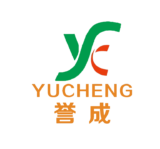Understanding the cost of CNC machining is crucial for businesses aiming to control expenses while ensuring high-quality production. Whether you’re prototyping or mass-producing metal parts, this guide explains what goes into CNC machining pricing, helping you make smarter purchasing decisions.

💡 1. What Determines CNC Machining Costs?
CNC machining cost is not just about machine time. It includes a combination of technical, material, and labor factors. The key components are:
| Cost Factor | Description |
|---|---|
| Material Cost | Price of raw materials like aluminum, steel, brass, or POM. Exotic metals cost more. |
| Setup & Programming | Time needed to create CNC codes, set fixtures, and calibrate the machine. |
| Machining Time | Charged by the hour; depends on complexity, feed rates, and required accuracy. |
| Tooling Wear | Includes the cost of tool usage and replacement (especially in hard materials). |
| Finishing Processes | Anodizing, powder coating, polishing, or painting adds cost. |
| Labor Cost | Operator labor for setup, inspection, part handling, and packaging. |
| Overhead | Factory electricity, maintenance, and amortized machine depreciation. |
🔧 Tip: Complex geometries = longer machining time = higher cost.
🧪 2. Material Matters — A Lot
Material choice has a major impact on CNC pricing. For example:
- Aluminum 6061 – Low-cost, easy to machine, widely used
- Stainless Steel 304/316 – Harder to machine, higher tool wear
- Brass/Copper – Higher raw material cost
- Engineering Plastics (POM, ABS) – Lower density, faster to machine
Also, different materials require specific cutting tools and cooling systems, which adds to setup time and wear.
🕒 3. Prototype vs Mass Production Costs
| Order Size | Unit Cost | Notes |
|---|---|---|
| 1–10 pcs | High | Includes full setup/programming cost |
| 50–100 pcs | Medium | Setup amortized across multiple parts |
| 500+ pcs | Low | Efficient for production machining |
⚙️ Prototyping is always more expensive per piece. If your part design is finalized, consider batch production to save.
🛠️ 4. Design Complexity & Tolerances
Design plays a huge role in cost. Consider the following:
- Simple 2D contours vs 3D surfaces
- ±0.01mm tolerance costs more than ±0.1mm
- Deep holes, undercuts, or internal threads add complexity
- More toolpaths = more machine time = more cost
✅ Design for Manufacturability (DFM) is key. Simplify wherever possible.
🎨 5. Surface Finishing
Some common finishes and their impact:
| Finish Type | Impact on Cost |
|---|---|
| None / As-machined | Lowest |
| Anodizing (Aluminum) | Medium |
| Powder Coating | Medium–High |
| Polishing / Brushing | Time-intensive, more costly |
| Sandblasting + Anodize | Popular for consumer parts, adds visual appeal and cost |
Finishing usually adds 10–30% to the base machining cost.
🌍 6. CNC Machining in China vs Other Countries
Outsourcing to China offers significant cost advantages:
- Labor costs are lower
- Machine density and factory scale reduce overhead
- High experience in export standards and complex parts
- Many Chinese suppliers offer all-in-one services (machining + finish + packaging)
📉 Compared to US/EU, savings of 30–60% per part are common, especially in volume.
📊 7. Real Example: Aluminum Bracket Quote
| Specs | CNC Machining Quote (USD) |
|---|---|
| Aluminum 6061, 100×50×10mm, 2 holes, anodized | $18.00/pc (qty 10) |
| Same part, qty 500 | $4.80/pc |
| With powder coating | +$1.20/pc |
Note: Includes material, machining, and surface finish. Actual quote may vary depending on design.
✅ Conclusion: Get Smarter with CNC Pricing
Before requesting your next quote, ask yourself:
- Can I simplify the design or reduce tolerance?
- Is my material over-engineered for the function?
- Can I order in batch instead of one-off?
Understanding the cost drivers of CNC machining helps you better communicate with suppliers and save money over time.

